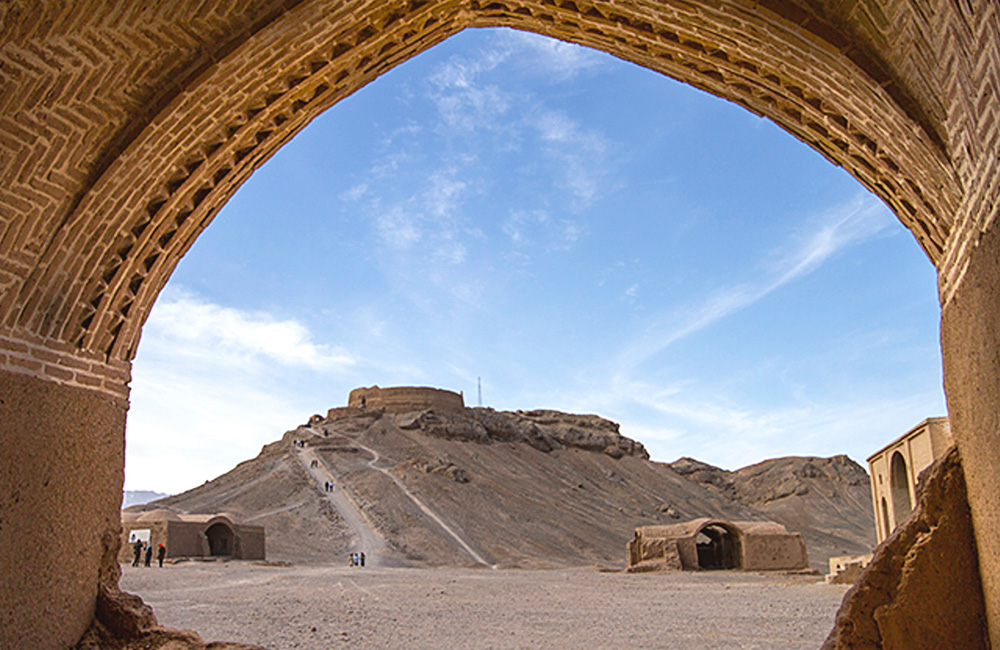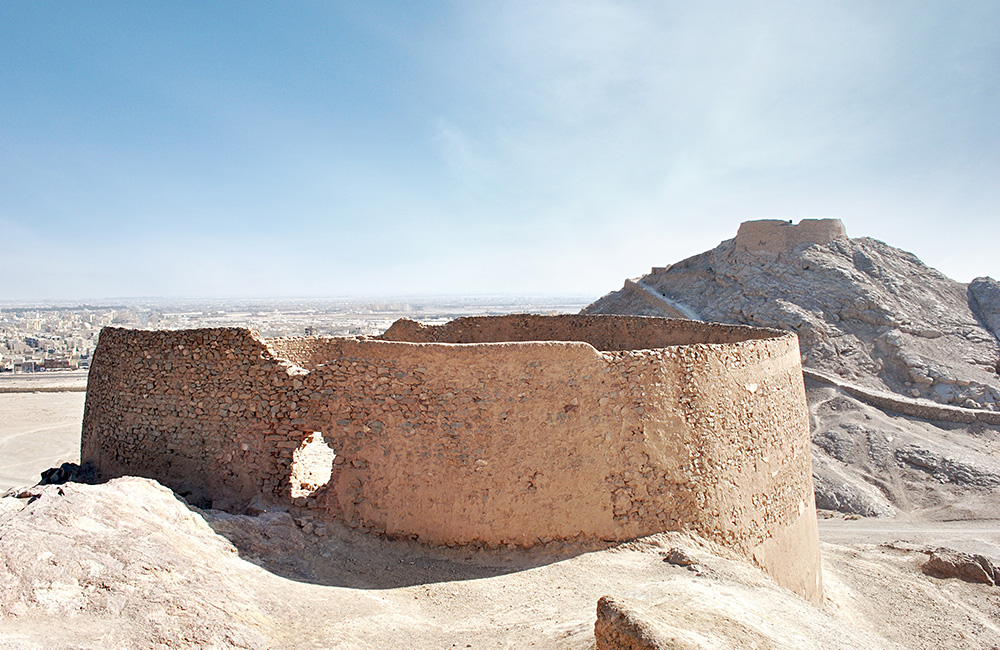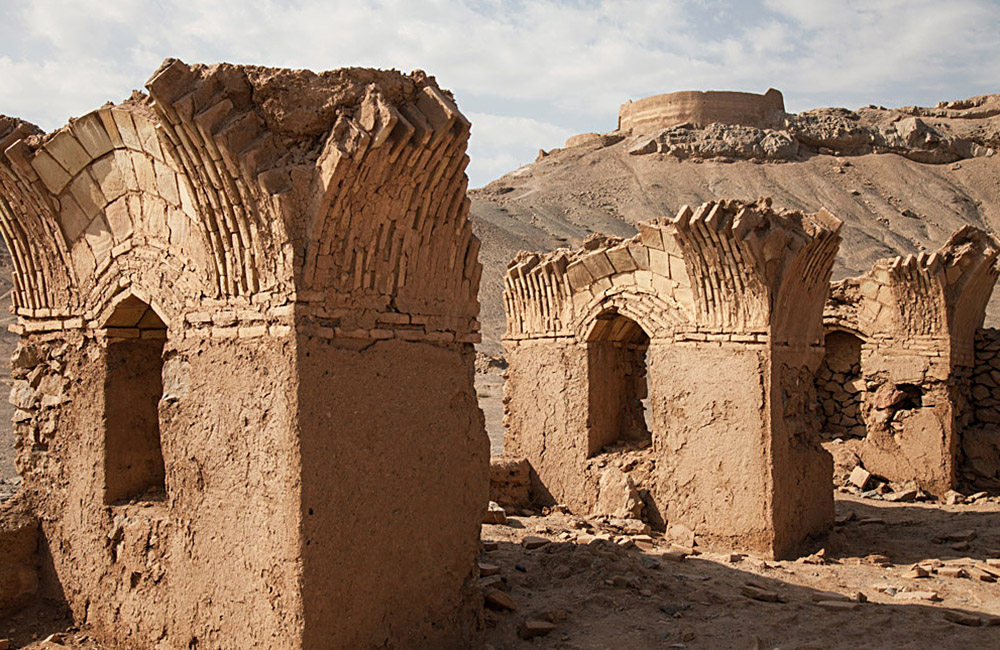Also referred to as ‘Dakhmeh Zartoshiyun’ in Persian, the Zoroastrian Towers of Silence reveal an ancient secret ritual ground in Yazd, Iran, previously only accessible by less than a handful of people.
Placed high up on a mountainous hilltop, the Towers of Silence were a place where a rare form of ancient funeral ceremony. Some people refer to it as the ‘sky burial’ ritual.
Although it is rarely practiced today, for reasons stated below, prior to the advent of Islam, this Zoroastrian ritual was practiced by the majority of Persian people. Come along with goingIRAN to learn and discover more about this mysterious ritual of ancient Persian culture!


Dakhma’s Towering History
The first writing on the Zoroastrian ritual of open exposure of the dead dates to 440 BCE in the ancient Greek ‘Histories of Herodotus’. However, the use of such towers for this purpose haven’t been documented until 9th century BCE.
With the passing of time, modernization and the expansion of the city, the use of the dakhma has been forbidden by the government since 1965. Do to modern circumstances, this kind of practice cannot be maintained in a sanitary fashion anymore. And so, just as the ritual, the vultures have also migrated out of this area.
There are two towers topping-off the peaks of the two mountain ridges sticking out of the flat desert. The older one is called Mankji Hatria (Indian Zoroastrian origins) and the newer, Golestan.
Makanji is said to date back to the Safavid Era, while Golestan is said to belong to the more recent Qajar Era.
Sacred Rites of the Persian Zoroastrian Culture
As hinted before, the function of these towers of silence were for excarnation. This is the process of the de-fleshing of a corpse by scavenger birds, such as vultures. Similarly, this form of funeral process is also seen in Tibetan and Comanche cultures.
Through the effects of modern cultural conditioning, disposing of a corpse in open air may seem a bit counterintuitive to some.
However, the Zoroastrians saw it from a different perspective. Recognizing the earth and fire to be sacred, they did not wish to pollute either of them. This way the birds would be fed, the earth would stay clean and the fire would remain pure.
Considering the direction of winds, the tower walls stand six-meters-high and are made from adobe bricks and mortar covered in a layer of mud.

The location of the Zoroastrian Towers of Silence have been carefully selected and designed. Much consideration has been given to prevent any contamination being carried to the city in the wind.
The bigger Golestan Dakhma has a diameter of 25 meters, while the Mankj has only 15 meters. The Tower of Silence has three main sections: men, women, and children. The bodies of the dead would be laid out in their respective section accordingly while the Avesta was read by the ritual performers.
Aside from the round towers, there are also several other brick-buildings on this site; used for the ceremonial preparation of the bodies.
Only the salar and komak-salar, the people in charge of performing the ritual, were allowed in the dakhma. Relatives of the deceased were never allowed to enter beyond the entranceway.
The corpses were laid out in the sun, where the birds had ample time to swoop down and have their feast. After the vultures and buzzards ate the flesh, the bones would be placed in the ostodan (the center-pit or ossuary) every two months. A type of acid (usually lime) would then be poured over the bones to speed up the disintegration process.
During your visit to Dakhmeh Zartoshtiyun, if you’re lucky, you’ll run into an old man… Whom of which, is the last remaining transporter of bodies to the towers of silence, still hanging around the entrance of tower! Once upon a time, it was this very man who carried the heavy corpses up the steep hill to their final moments of bodily existence.
How to Get Zoroastrian Towers of Silence, Alive
The Zoroastrian Towers of Silence are located 15 kilometers south of the city of Yazd near the Safaieh neighborhood. Of the two dakhmas, Golestan is still open, but Mankji has been closed to public viewing. Tourists and visitors can expect to pay an entrance fee of 80,000 IRR for viewing this site.
The hours of visitation are 7am – 2pm in the winter and 8am-12pm in the summer. Not such a bad idea to visit such a place early in the morning to make one appreciate our short, but very sweet stay on Earth!
Travelers can reach the Zoroastrian Towers of Silence via taxi from central Yazd. Come prepared as it’s a 45 minute hike to the top of the mountain.
City/Town: Yazd
Street Address: Zoroastrians Dakhmeh, Isar Sq., South of the city of Yazd
Operating days: Every day
Operating Hours: 7am – 2pm in the winter and 8am-12pm in the summer
Typical Price: 80.000 Rls.
Befor Travel To Iran Read The Article “Everything About Internet in Iran”
Recommended Reads | Credit Card in Iran


